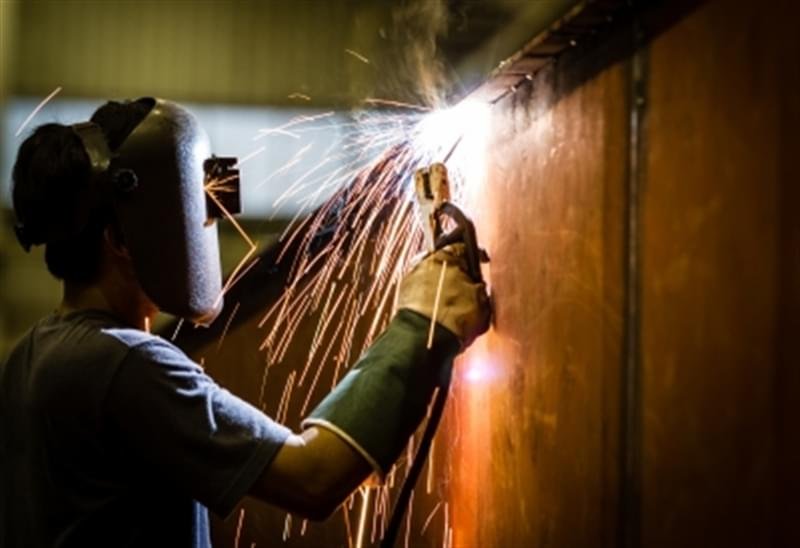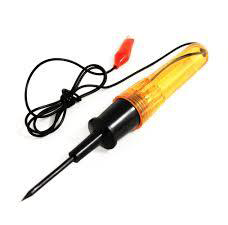Back to: BASIC TECHNOLOGY JSS3
Welcome to class!
In today’s class, we will be talking about metal joining. Enjoy the class!
Metalwork Projects – Metal Joining

Metal joining is defined as the process of sticking metals together with the use of fasteners, either permanently or temporarily.
Methods of joining metals
1. Soldering:
Soldering is a method of joining metal surfaces together using an alloy metal called solder (flexible lead wire).
Types of Soldering
(i) Soft Soldering: This type of soldering takes place in temperatures between 188⁰C – 250⁰C. The soft solder used during this soldering operation is an alloy of tin and lead. It is used on radios and television.
(ii) Hard (Silver) Soldering: Silver soldering makes use of solder which melts above red heat. The solder is an alloy of copper and zinc. It is used on fridges and air-conditioners.
Tools and materials required for soldering
They include the following:
(i) Soldering bit: Soldering bit is used to apply heat and soft solder to a large surface area of metal parts. Such as the ones used in panel beating.
(ii) Soldering iron: Soldering iron is used to apply heat and soft solder to smaller spots and joints in electrical and electronic circuits. (radio and television).

(iii) Solder: Solder is an alloy whose melting point is lower than that of the metals to be joined through this method.
(iv) Flux: These are chemical reagents used for clearing and removing oxides from surfaces to be joined. This is to prevent oxides from forming on such surfaces to achieve a smooth finish. Some flux used are olive oil, candle grease and resin.
(v) Heat source: Heat source during soldering may be electrically applied or manually applied. For instance, some use charcoal heat source to heat soldering bit. However, electrically heated sources are common these days.
2. Brazing:
Brazing is the joining of metals using an alloy of copper plus zinc (brass). It is a type of hard soldering, that ranges from 850⁰C and 950⁰C. Brazing is used for making stronger joints and a red heat is usually needed to melt them.
NOTE: Heat Source: In brazing, the heating tool is the brazing hearth.
Brazing hearth Procedures for Brazing
(i) Clean the metals to be joined especially at the joint point.
(ii) Apply borax to clean up and leave a coat on the metal surfaces.
(iii) Clamp the workpiece in place before applying heat.
(iv) Apply the filler rod to the joint and heat with oxyacetylene flame.
Safety precautions to observe during soldering/brazing
(i) Avoid inhaling fumes from molten flux by not leaning over too close to the joint being brazed.
(ii) When the brazing operation is complete, wash off your hands and spot where flux was applied.
(iii) Ensure that the workshop is properly ventilated for the free flow of air.
(iv) Do not allow borax or any other flux to rub your skin. It could be dangerous.
3. Welding:
It is the process of melting a metal workpiece and a filler to form a pool of molten strong joint. Welding is a permanent fastener for metals.
Types of welding
- Arc Welding: This is the process of maintaining an electric arc between an electrode and a base material to melt metals at a welding point. The electrode may be consumable or non-consumable.
- Gas (Oxyacetylene) Welding: This process involves the use of the combustion of acetylene in oxygen to produce a welding flame of about 3100⁰C. It is widely used for welding pipes and tubes and for cutting metals or panel beating in vehicles.
- Mechanical Fasteners: These are often referred to as temporary fasteners since parts can be easily separated. Mechanical fasteners include screw and nut, bolt and nut, taper pin, stud and split pin.
- Riveting: This is a permanent fastener in metalwork. The rivet has a head and a buck-tail. For the rivet to be installed, the head is positioned in a drilled hole and the tail is made to deform by hammering so that it spreads to twice its original shaft diameter.
In our next class, we will be talking about MOTION ENGINEERING PROJECTS. We hope you enjoyed the class.
Should you have any further question, feel free to ask in the comment section below and trust us to respond as soon as possible.
